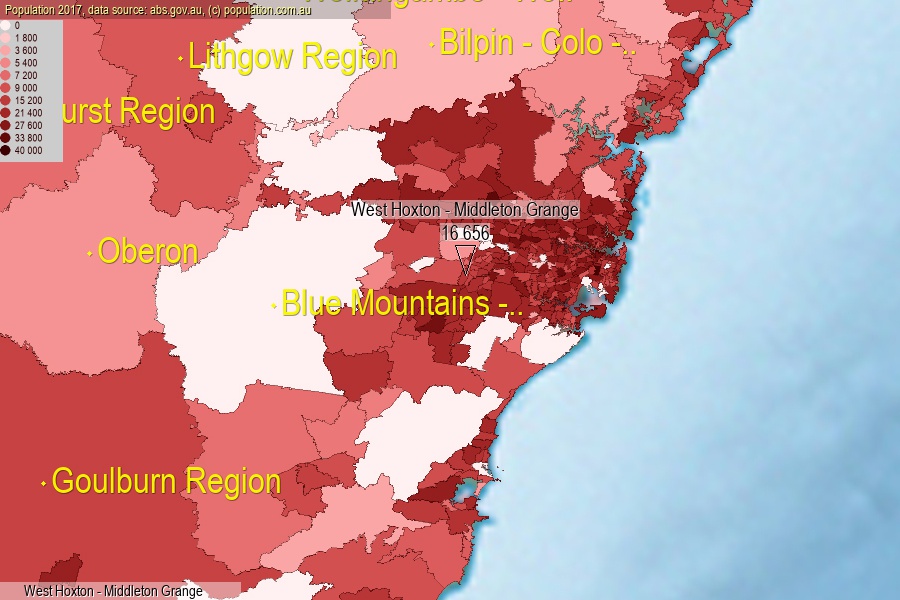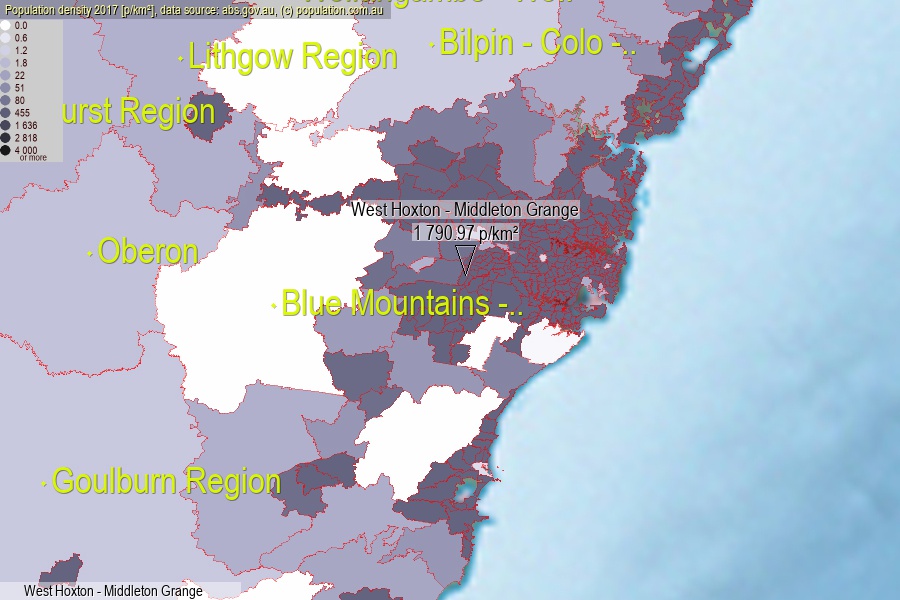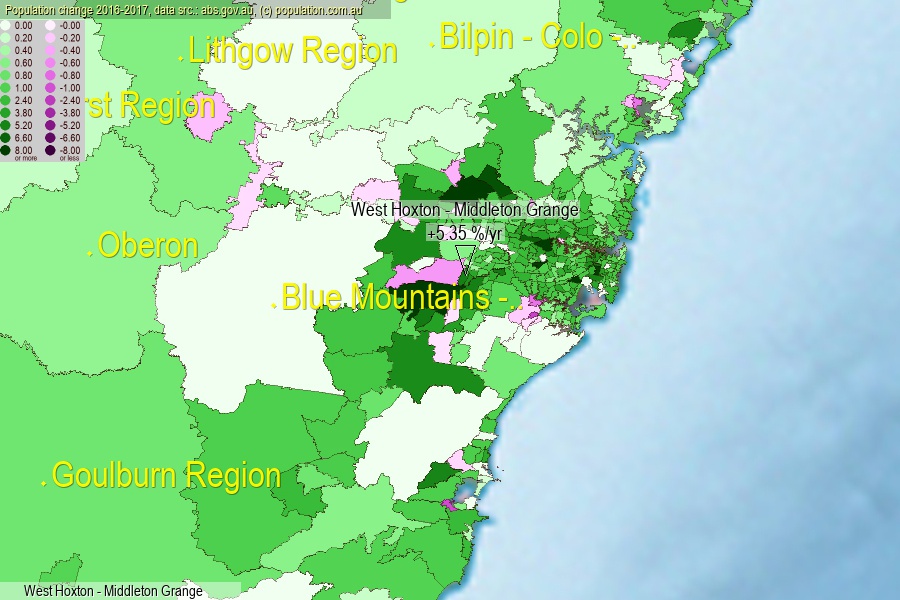 population.com.au
population.com.auLast official estimated population of West Hoxton - Middleton Grange (as Statistical Area Level 2) was 16 656 people (on 2017-06-30)[2]. This was 0.07% of total Australian population and 0.209% of NSW population. Area of West Hoxton - Middleton Grange is 9.30 km², in this year population density was 1 790.97 p/km² . If population growth rate would be same as in period 2016-2017 (+5.35%/yr), West Hoxton - Middleton Grange population in 2025 would be 25 274. [0]



Click to enlarge. West Hoxton - Middleton Grange is located in the center of the images.
Population [people], population density [p./km²] and population change [%/year] [2]
View borders » (new window) [4]
[2001-2002] +19.25 %/Yr.
[2002-2003] +11.31 %/Yr.
[2003-2004] +7.64 %/Yr.
[2004-2005] +6.38 %/Yr.
[2005-2006] +6.84 %/Yr.
[2006-2007] +6.91 %/Yr.
[2007-2008] +4.27 %/Yr.
[2008-2009] +6.05 %/Yr.
[2009-2010] +3.91 %/Yr.
[2010-2011] +5.96 %/Yr.
[2011-2012] +8.22 %/Yr.
[2012-2013] +7.56 %/Yr.
[2013-2014] +8.99 %/Yr.
[2014-2015] +7.82 %/Yr.
[2015-2016] +7.21 %/Yr.
[2016-2017] +5.35 %/Yr.
[0] Calculated with linear interpolation from officially estimated population
[1] Read more about SA2 and Australian Statistical Geography Standard (ASGS) on abs.gov.au
[2] Population data from Australian Bureau of Statistics (Population and density: 2017; change: 2016-2017)
[3] Digital Boundaries: Australian Statistical Geography Standard (ASGS) 2016.
[4] Border coordinates are simplifyed using Ramer-Douglas-Peucker algorithm.